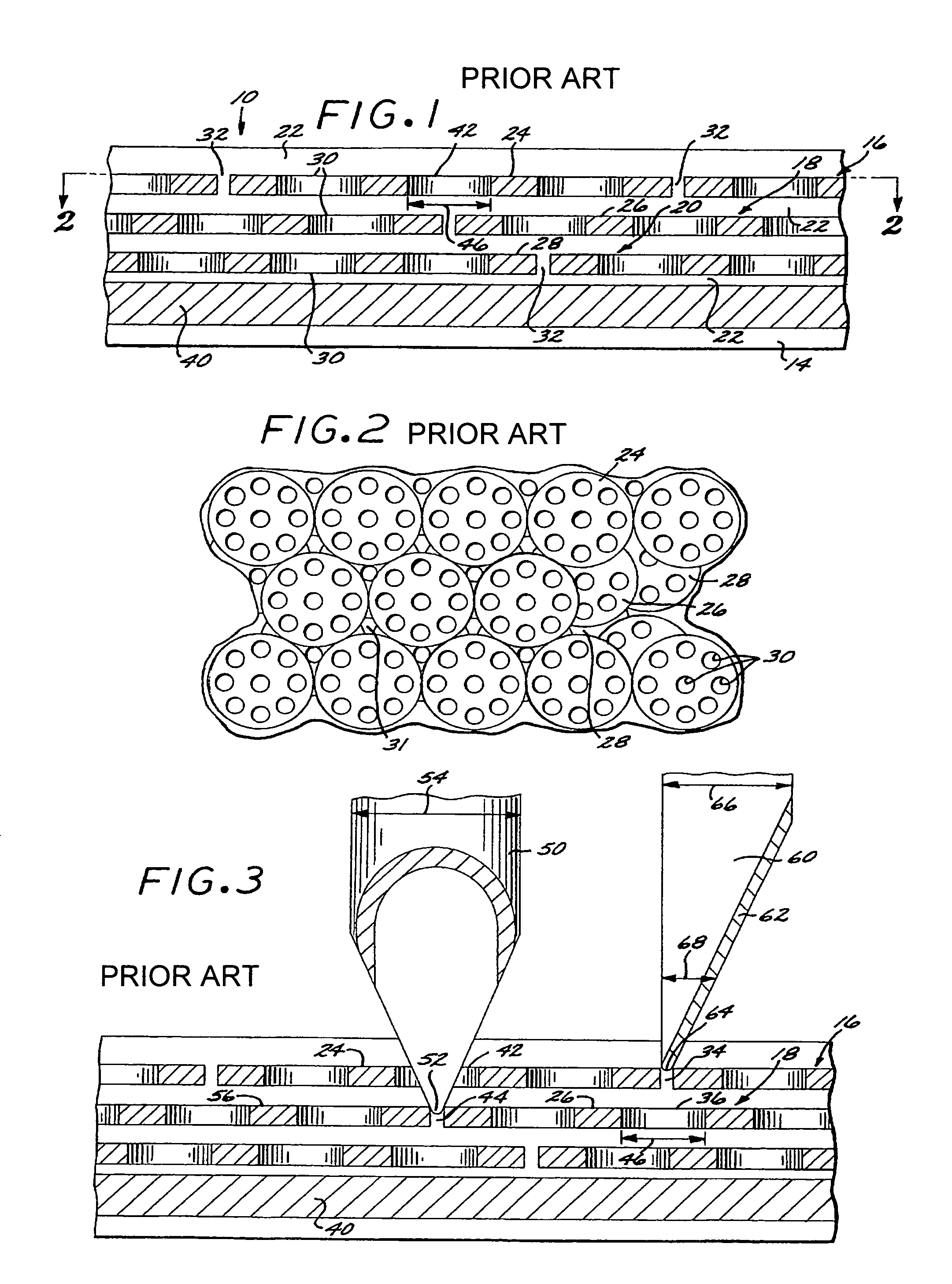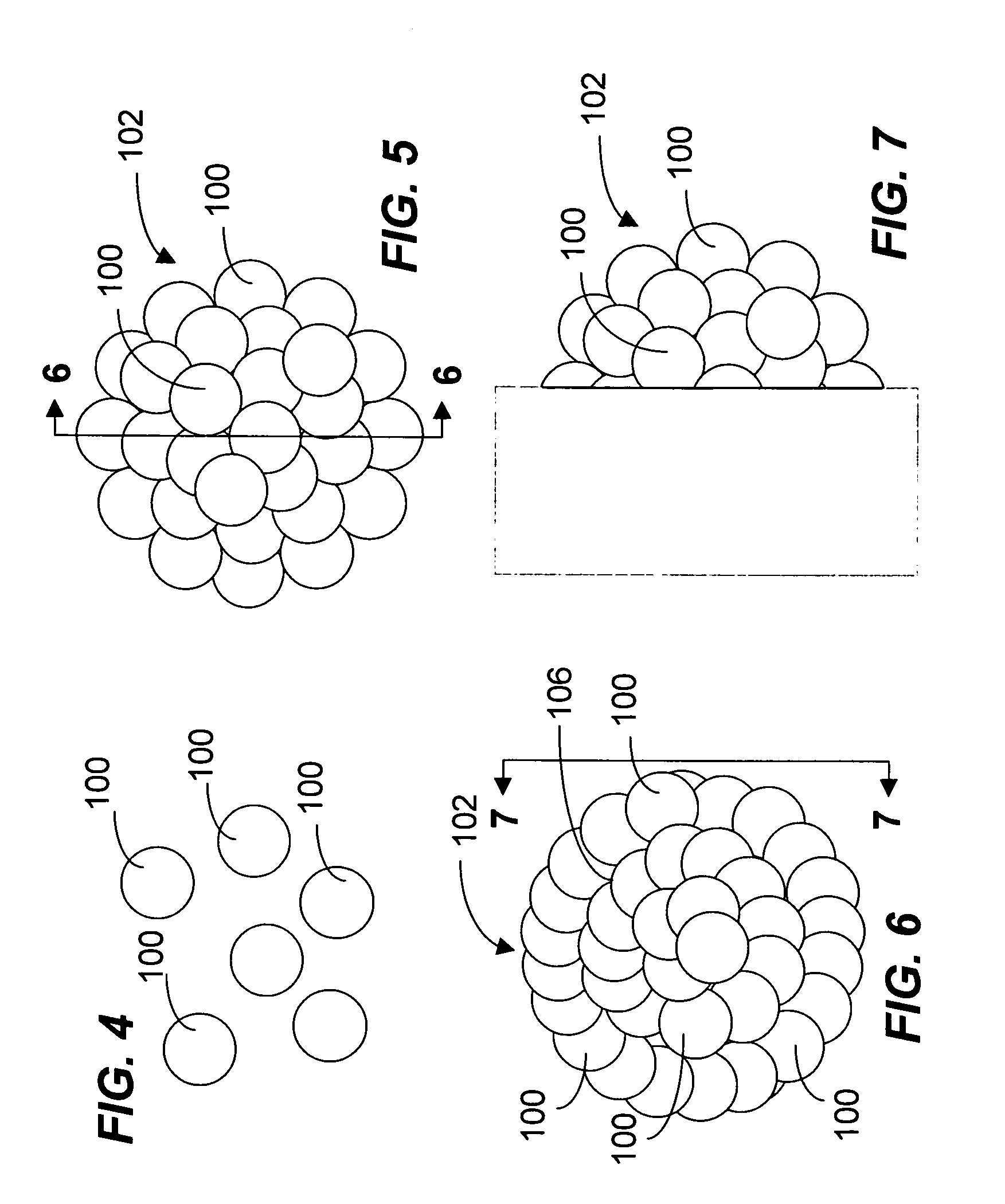Puncture and cut resistant surgical glove with macrosphere capture devices
a macrosphere capture device and surgical glove technology, applied in the field of protective puncture and cut resistant materials, can solve the problems of high risk of infection from needlesticks and other sharp instruments, harmful effects of needlesticks and scalpel blade cuts by themselves, and high risk of surgical injuries for surgeons and other medical personnel, so as to protect against dangerous puncture wounds, provide flexibility and elasticity, and low cost
- Summary
- Abstract
- Description
- Claims
- Application Information
AI Technical Summary
Benefits of technology
Problems solved by technology
Method used
Image
Examples
Embodiment Construction
[0059]Referring now to the drawings, FIG. 4 shows a set of individual microspheres 100. For the purposes of a surgical glove, each microsphere can be a ceramic (alumina) sphere with a diameter of 5 to 10 mils (125 to 250 microns). A microsphere can also be formed of many other materials and for other uses be smaller or larger. The key microsphere properties are that it should be substantially spherical and relatively hard so that a needle or other sharp instrument will not be able to puncture the microsphere.
[0060]The microspheres 100 are used to form macrospheres such as the macrosphere 102 shown in FIG. 5. A macrosphere used for a surgical glove would generally be about 20 to 60 mils in diameter (500–1500 microns), although for other purposes a macrosphere can be smaller or larger. FIG. 6 shows an elevational section of the macrosphere 102 of FIG. 5 along line 6—6 and illustrates a macrosphere formed of multiple microspheres 100 bound together to form the macrosphere. In this impl...
PUM
| Property | Measurement | Unit |
|---|---|---|
| diameter | aaaaa | aaaaa |
| diameter | aaaaa | aaaaa |
| diameter | aaaaa | aaaaa |
Abstract
Description
Claims
Application Information
 Login to View More
Login to View More - R&D
- Intellectual Property
- Life Sciences
- Materials
- Tech Scout
- Unparalleled Data Quality
- Higher Quality Content
- 60% Fewer Hallucinations
Browse by: Latest US Patents, China's latest patents, Technical Efficacy Thesaurus, Application Domain, Technology Topic, Popular Technical Reports.
© 2025 PatSnap. All rights reserved.Legal|Privacy policy|Modern Slavery Act Transparency Statement|Sitemap|About US| Contact US: help@patsnap.com



